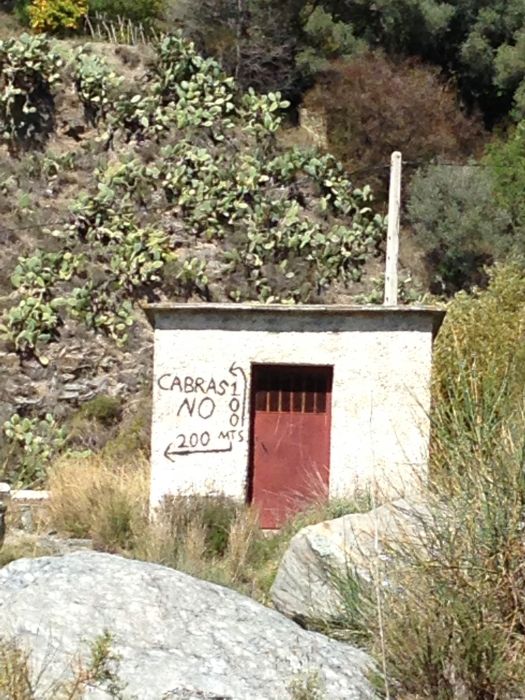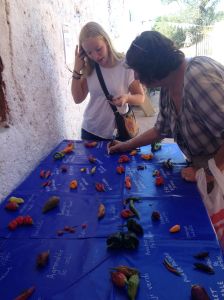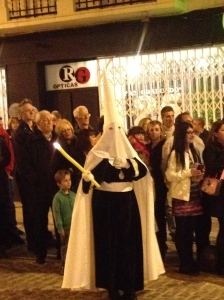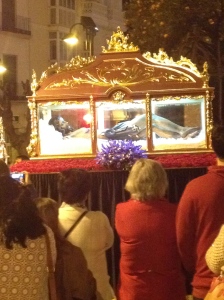Graffiti sprayed on a wall near to the car park of the ruins of the Moorish castillo in the nearby town of Lanjarón welcomes refugees (refugiados bienvenidos). We stop to contemplate its significance.
There’s little far right activity in Spain. That’s not to say that racist attacks don’t happen. The Office for Democratic Institutions and Human Rights (ODIHR), which records hate crimes reported by participating states (the majority of European countries), describes 1,285 such incidents in Spain in 2014. There were 52,853 in the UK that year (and a record increase in the weeks immediately before and after the EU referendum).
Clearly there are differences in reporting criteria between countries, which make such comparisons unreliable. And Spain is not without anti-immigrant and anti-refugee groups. But their visibility is limited and they have no electoral influence.
Acting prime minister Rajoy’s right-wing Partido Popular has always been supported by the country’s elite class, known for its anti-foreigner attitudes. But while a new, more populist politics has emerged in the shape of Podemos and Ciudadanos [Earthquakes shake Spanish land and politics] to challenge the traditional left-right consensus (and as I write, Spain still has no government, as the parties continue to negotiate their positions, months after a second general election and a third – at Christmas – looks increasingly likely), no far right organisation has emerged to seek representation nationally or locally.
Órgiva is an example of the tolerance the Spanish have for immigrants. One of the most diverse towns in the country, at least 68 different nationalities were registered at the town hall on the last count. People of many colours and races mingle in the cafes and bars, particularly on market day. As I so often explain to people who ask why I moved here, it reminds me of my beloved Camden Town.
There is also a certain irony to that pro-refugee message near the castillo. The Moors were brutally driven out of Spain by Christians. The parish church of Órgiva was built on the site of the mesquita (mosque) at the beginning of the 16th century. And yet the Spanish are immensely proud of their Moorish history. Indeed, that Moorish bloodline is still evident in the faces of many locals.
I’ve blogged before about how, when someone daubed the anti-communist Good Night Left Side graffiti around the streets, it was quickly reduced with white paint to “good night” [Nationalistic referendums here and there]. No one has tried to cover up “Mi sangre es rojo, mi corazon es izquierda” – my blood is red, my heart is left – sprayed on the side of the butchers. This is a town that has many residents who are proudly working class and socialist, for whom the memory of being the frontline against Franco’s rebels as they came over the Lujar mountain to slaughter entire Alpujarrean villages that stood against them is still raw [Unsettled election, unsettled history].
For us, the most offensive words we see here are the anti-immigrant and refugee headlines of the Daily Mail, Sun and Express. Ironic that newsagents, in displaying these tabloids at their doors because some in the British community here buy them are, in effect, pandering to the reactionary attitudes of another type of immigrant. We hope that hate and division does not follow.
 vada en verano (in summer), just 1.5 hours drive from Órgiva, we became increasingly convinced that the footage of our own trip was somehow being replayed.
vada en verano (in summer), just 1.5 hours drive from Órgiva, we became increasingly convinced that the footage of our own trip was somehow being replayed.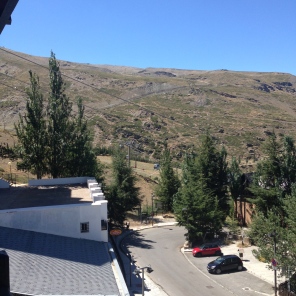 identical cars continually driving around this empty pueblo remained a puzzle. We think we spotted a Lexus logo, but the red plates, the numbers on the sides and the lack of anything indicating a model were odd.
identical cars continually driving around this empty pueblo remained a puzzle. We think we spotted a Lexus logo, but the red plates, the numbers on the sides and the lack of anything indicating a model were odd. haps they were on their way to pick up a fleet of enigmatic white 4x4s, whose activities, it turned out, were rather more spied upon (by us) than spying.
haps they were on their way to pick up a fleet of enigmatic white 4x4s, whose activities, it turned out, were rather more spied upon (by us) than spying.